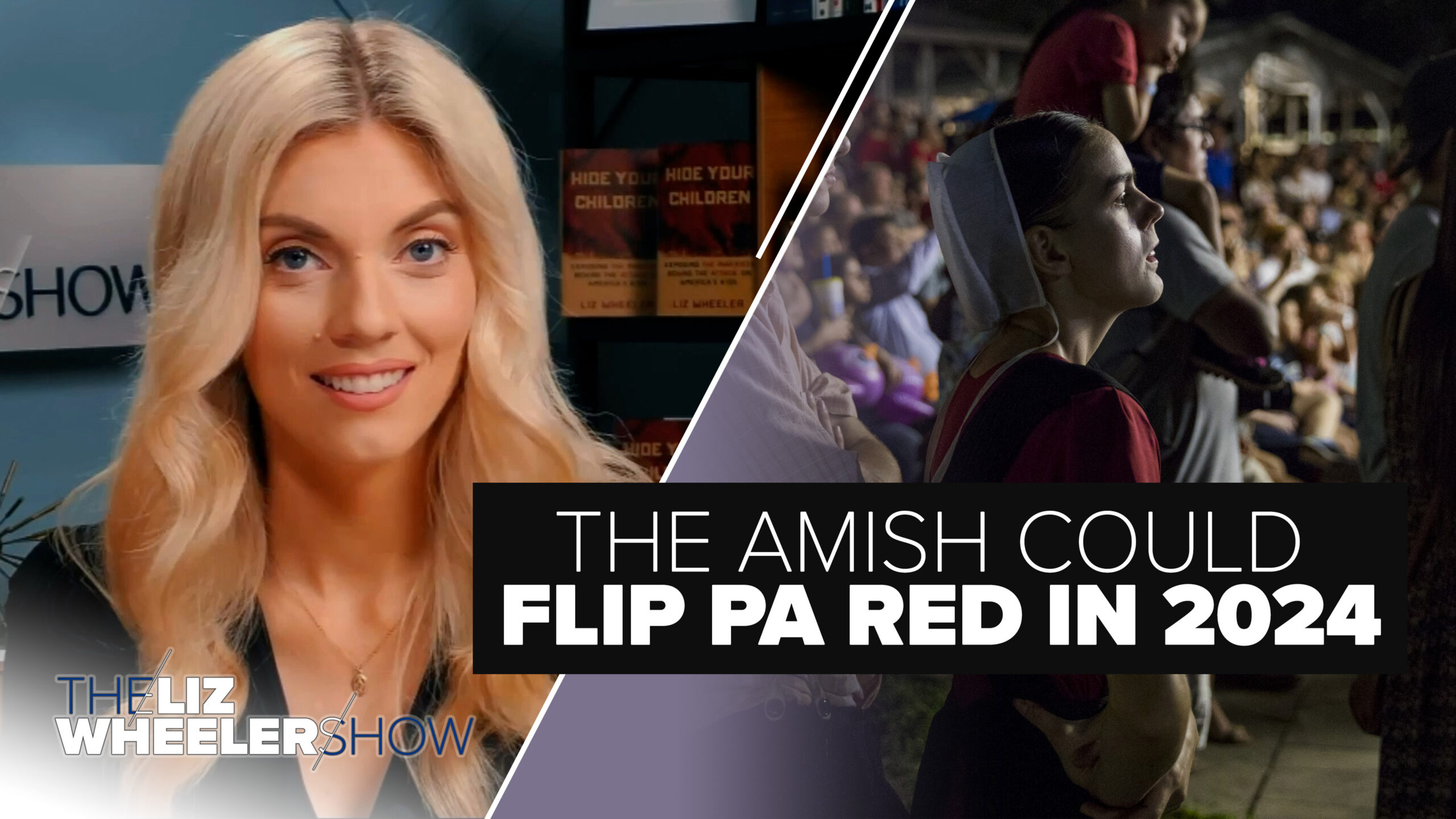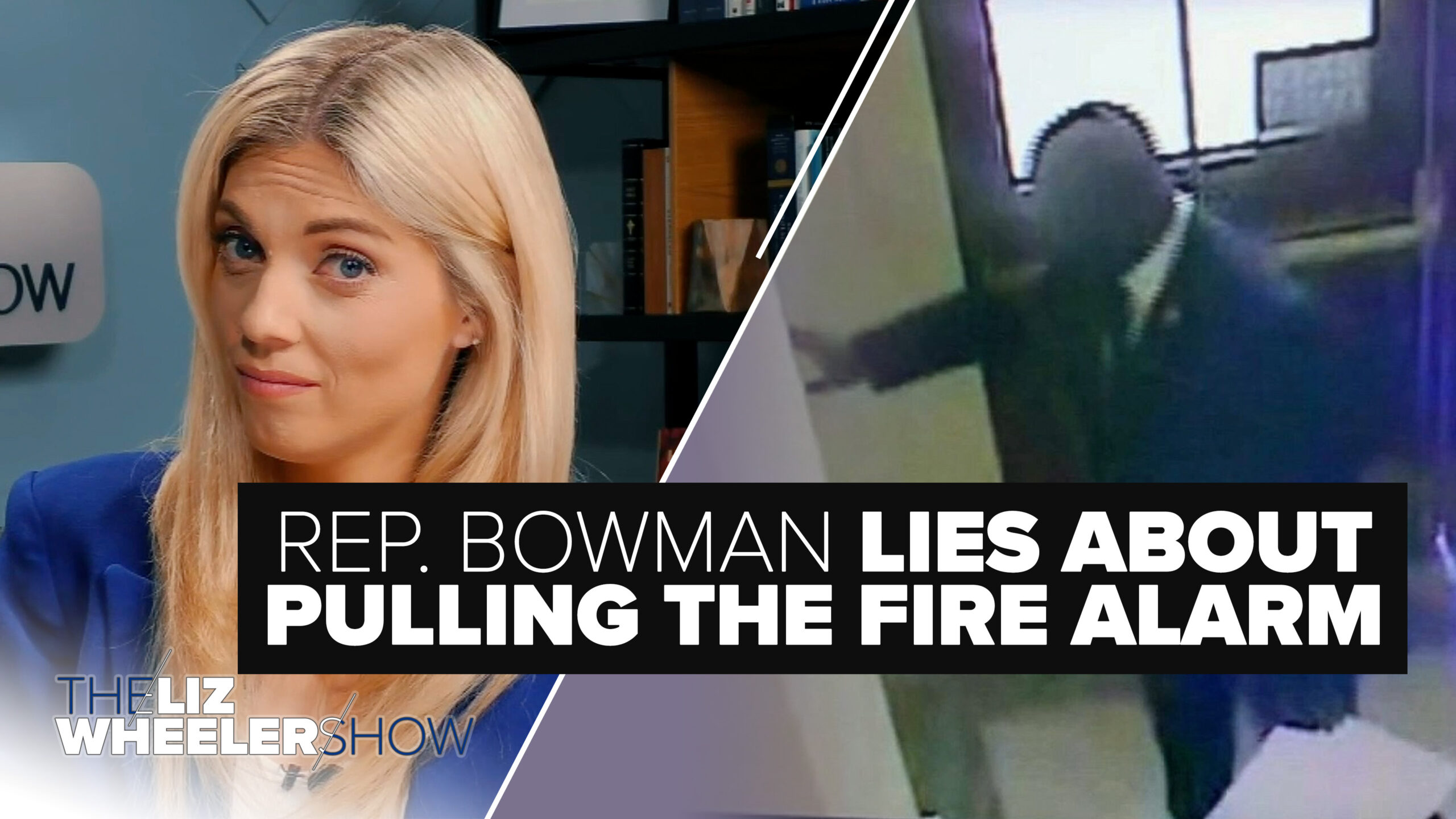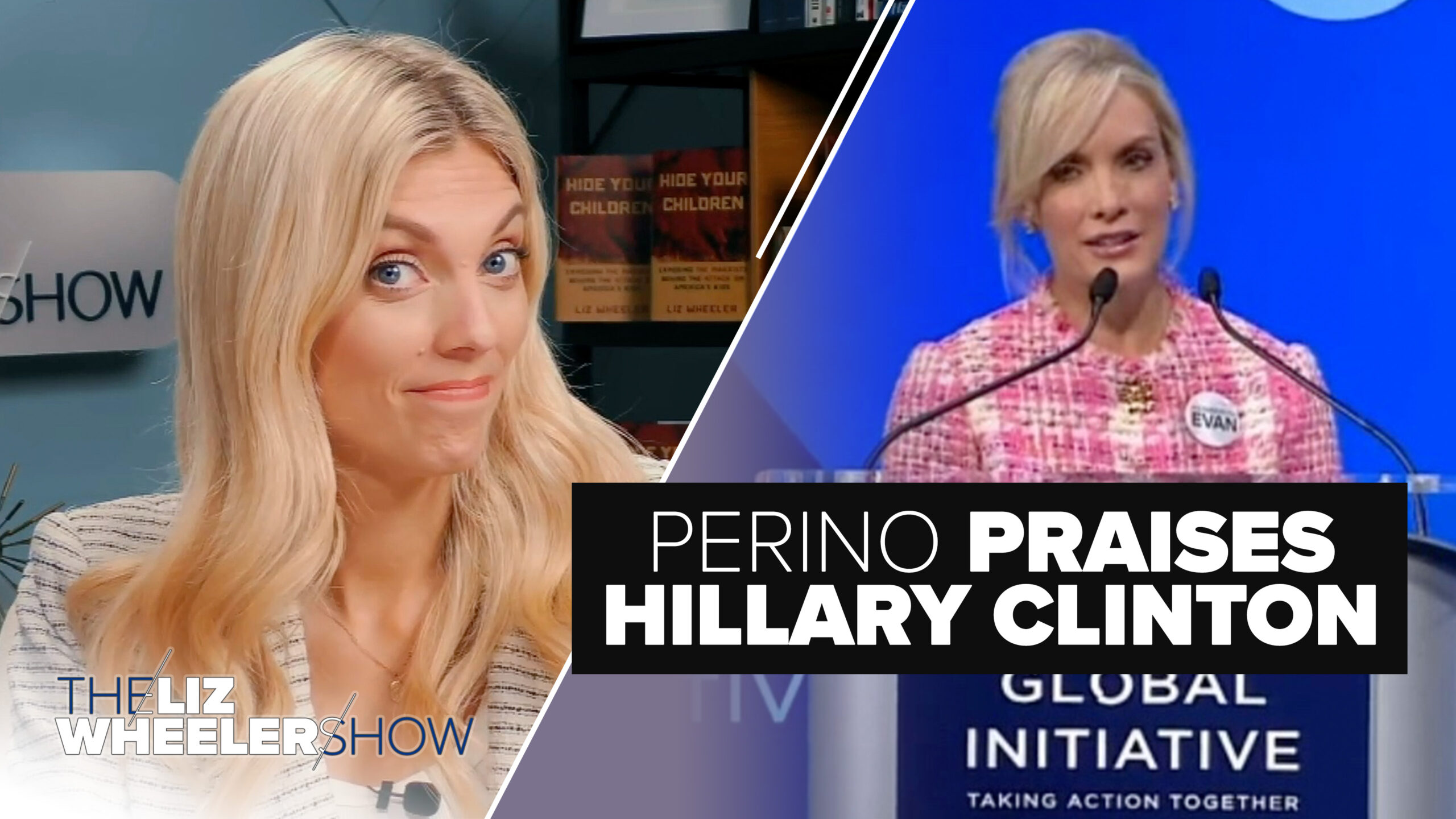SHOW SUMMARY
Newsweek’s Josh Hammer, a constitutional lawyer and syndicated columnist, discusses the recent Supreme Court rulings on affirmative action. Hammer highlights that the court’s decisions in the cases involving Harvard University and the University of North Carolina Chapel Hill effectively declared affirmative action policies in higher education to be a violation of both Title VI of the Civil Rights Act and the 14th Amendment’s Equal Protection Clause.
Hammer emphasizes that the Supreme Court’s rulings mark a significant milestone in ending systemic racism in America. He criticizes media outlets such as MSNBC and The New York Times for not highlighting this outcome and instead framing the rulings as curtailing racial diversity in elite institutions. Hammer argues that it is morally and constitutionally wrong to consider race as a factor in university admissions or government contracting decisions. He commends Chief Justice John Roberts for his majority opinion, which condemns the dissenting justices’ defense of programs that prioritize race.
Hammer also praises Justice Clarence Thomas for his concurrence in the cases. Thomas, who has long been critical of affirmative action, argues that such policies create doubts about the merit of minority students and violate the principle of equality under the law. Hammer concludes by discussing the conflicting views of society represented in the majority opinion and the dissents, describing it as a battle between equality and the concept of intersectionality and equity. He commends the Supreme Court justices who made the right decision and emphasizes the importance of upholding the colorblind nature of the Constitution.
Show Transcript
This transcript was generated automatically and may contain typos, mistakes, and/or incomplete information.
Welcome back to Liz Wheeler Show. I am obviously not Liz Wheeler. I am Josh Hammer. I’m the senior editor at Large for Newsweek. I’m the host of my own show, the Josh Hammer Show, and a syndicated columnist. Grateful for Liz for letting me do this guest hosting appearance. Really happy to be with you guys. As Liz also knows, I’m actually also a constitutional lawyer by training. Liz knows that because we have had so many conversations about these topics over the years, been on her show to discuss this itself. And as a constitutional lawyer by training, well, we have finished up the Supreme Court term. We have had some major breaking news in recent days at the US Supreme Court in particular. In particular this past Thursday. We saw the opinions released in what for me and I think many others, was the most anticipated case or really twin cases of the entire term.
What did the Supreme Court do? Well, they actually ended systemic racism in America. I mean, you probably wouldn’t know that. I mean, that’s definitely not the headline that you’re going to see, at least if you’re tuning in to MSNBC, CN , reading the New York Times op-ed page, things like that. But really, they ended to send the racism. America, the Babylon B actually had it best. The Babylon Bee said Democrats devastated as Supreme Court bans racism. I speak here, of course, about affirmative action. So let’s take a look at what the scene at the Supreme Court actually looked like this past Thursday as we were getting ready to release these major, major cases out of Harvard University and the University of North Carolina when it comes to affirmative action. And you know, you see there these protestors who are mingling. I mean, the way these things work is when you actually go to the, yeah, so there we go.
We, we see these protestors mingling. And you know, the way it works is when you actually get there in line, anyone who’s been to the Supreme Court will tell you you don’t actually know in advance what cases are going to be released on a given day. If you, you’re expecting or hoping for a certain case, that’s really all you can do is you can actually hope for that case. These guys had no idea what they were about to see. But in Students for Fair Admission versus Harvard College and the University of North Carolina Chapel Hill, we have once and for all a definitive, a definitive ruling from the US Supreme Court holding that affirmative action policies in higher, higher education and university emissions violate not just Title six, not just title six of the Civil Rights Act, but actually the 14th amendment of the, of the US Constitution itself.
They violate the equal protection clause. This is a ruling that many of us in the conservative legal movement have been pining for, for years and years and years. Look, speaking personally, I mean, I can remember when I, when I started at the University of Chicago Law School a decade ago, I mean, you think about kind of the big cases that motivate right of sender students. Abortion at that time was one, well, last term we obviously saw the overturning of Roe versus Wade and Casey versus Plan Parenthood. It’s 1992 successor, and now we have seen the overturning of affirmative action. So it’s just a really, really remarkable ruling. It overturns over four decades of Supreme Court precedent. The Supreme Court first started to go down this road in the late 1970s in a case called Bocky at the University of California in 1978.
They doubled down 25 years later in these two cases from the, from the University of Michigan called Grutter and Grass. And then just last decade, they had these cases out the, out of the University of Texas called Fisher, where they again decided they were not actually going to do anything and they were going to keep affirmative action in place. Now, the problem with affirmative action obviously is multifold. The listeners and the viewers obviously know this, but there are multiple glaring problems here. The first and foremost problem is that it is a flagrant violation. As the court finally, finally held this past Thursday of the US constitution’s colorblind nature to take race into account, when you make consequential decisions such as who was admitted to a higher university, a higher education institution, a university, whether it’s a college, a PhD program, whatever, to take race into account for that matter when you have government contracting decisions.
That was a case in 1995 called Adiant versus Pena to take race into account when you are giving out government benefits. These are not just morally irksome because again, we the people going back to the Declaration of Independence itself, and it’s famous plea for, we are all endowed by our creator with unalienable rights. we are, we are equal before God almighty himself. It is not just morally irks him, but is also explicit violations of the Equal Protection Clause, the 14th Amendment. So really just, I cannot emphasize this enough, and you know, many of us were, were cautiously optimistic that the court would finally do this for the very simple reason that Chief Justice John Roberts, who is the swing vote on this court, he actually, if there’s one issue where John Roberts has, has really been consistent on, it’s actually the affirmative action issue. So John Roberts was nominated and confirmed by then President George W. Bush in 2005, and he’s had a very topsy-turvy career.
We obviously remember what he did to the Obamacare case back in 2012 when he rewrote that statute for the bench. But it was actually only two years after Roberts was confirmed in a 2007 case called parents Involved out of Seattle, Washington, which also involves racial preferences. Where he had this line where he said, the way to stop discrimination on the basis of race is to stop discriminating on the basis of race. So many of us were cautiously optimistic because that’s a very powerful quote, obviously from John Roberts. But on the other hand, Roberts has had his ups and downs over the years. He joined the liberals just a couple, just a few weeks ago, really in a case out of Alabama, a voting rights redistricting case called Milligan. So it really was not guaranteed to be this result. But I mean, I think I speak for many when I say that this is a result absolutely positively worth celebrating.
A admittedly, it’s not a result worth celebrating for everyone. I mean, here’s how the New York Times spun. And so the New York Times this was literally the New York Times take on the ending of systemic racism, i e affirmative action in America, the New York, the New York Times tweeted breaking news, the Supreme Court rejected affirmative action at Harvard and U n c, the major ruling curtails race conscious college admissions in the us Here’s the key part, all but ensuring that elite institutions become whiter and more Asian and less black and Latino. I mean, how disgusting and ludicrous is that take for any number of reasons. I mean, how implicitly racist is it to kind of spew out this bile where you are implicitly assuming that a ruling that does nothing other than uphold the colorblind equal equality equal under the law, equal treatment before judges, before politicians.
How can you be so racist, frankly, as to conclude that a holding that does nothing other than that will necessarily result in disparate treatment? And what’s really going on here? What is really going on here? Kind of getting outta the legal weeds for a second, just talking about kind of the broader cultural moral struggle that that is going on here and that we saw play out between the dueling opinions, the majority opinion, which was a magnificent opinion by Chief Justice John Roberts, probably the most magnificent majority opinion of his career. What’s really going on here between the majority opinion and the wonderful concurrencies and the dissents from Justices Sotomayor and Ketanji Brown Jackson is a conflicting view of society. I dunno how else to, to better simplify it than that. What you have here on the one hand is equality, actual the equality of the Declaration of Independence, the equality of equal protection clause.
We as human beings have unalienable rights. We, we, we have equal civil rights, statutory constitutional natural rights. We are equal before God. We are equal before the courts. We are just equal. On the other hand, and this obviously ties into the rise of the woke left over the past 5, 6, 7, 8 years or so, we see these, this Ebra x kendi vision of intersectionality of equity, and it’s really just a whole bunch of crap. And finally, we have a Supreme Court that is willing to say that. So credit where credit is due. I have been very critical at times, certainly of Chief Justice John Roberts, also very much a as well for justices Amy Coney Barrett and Breck Kavanaugh, who, although they are right more often than, than they are wrong, I do not think have the, have the backbone and the courage of justices, Clarence Thomas and Sam Alito, but credit where credit is due.
This is touching the third rail issue of race. It is obviously a dicey issue, and these justices all did the right thing there. Another man who is obviously vindicated here is justice as Clarence Thomas, Clarence Thomas, of course, in my opinion, the greatest living American, someone who grew up in the Jim Crow South. He wa he was dirt poor. English was not even his first language. And he has been sounding the alarm about affirmative action and the use of race in making at university admission decisions, government contract decisions. Going back to that case Adiant, which I mentioned just a few minutes ago, back in 1995, where Clarence Thomas first basically said that, you know what, for all the good that liberals think they are doing when it comes to affirmative action policies, there’s a, there’s a whole lot of bad that they’re doing.
And what Clarence Thomas explained in the Pena decision, he was so vindicated in these cases out of Harvard and University of North Carolina that dropped just this past week. What he explained is that when you give minority students a boost, a literal boost on their applications, you are making their peers question whether they actually belong there due to their merit or whether they got there by dent of their melanin content in their skin. Something as, as artificial as that, and McLaren Thomas has also explained is that you put some, you see doubt into the minds of many black and Hispanic students who benefited from these policies. So it is very much a double-edged sword. Unfortunately, it’s not a double-edged sword again for the dissenters in this case, Sonya Sotomayor and Ketanji Brown Jackson. So let’s, it’s worth unpacking the majority opinion, and at least Clarence Thomas’s concurrence a little bit here.
Again, the Sotomayor and Jackson Ascent really just go full intersectionality. Equity you know, you know, we, the government is empowered, the universities are empowered to do do this, to race, to try to basically create a diverse or equitable class of human beings of students that will better match the proportion of students across the country. That that basically is what they say. I mean, Ketanji Brown Jackson, her descent, she starts talking about, you know, the socioeconomic gaps between the median black or, or or average Black American versus the median or average white American. It’s all the stuff that you would typically read on you know, on a New York Times op-ed. I mean, that basically is what Soya Sotomayor is as a justice. But, you know, here is what John Roberts had to say here, and we can go ahead and pull up element one B.
This is Chief Justice John Roberts, who again, is really delivering, from my perspective, the landmark majority opinion of his whole career here. And he is blistering, he does not pull any punches here in condemning these descends from Sotomayor and Ketanji Brown Jackson. So John Roberts writes most troubling of all, most troubling of all is what the dissent must make these omissions to defend a judiciary that picks winners and losers based on the color of their skin. While the dissent would certainly not permit university programs that discriminated against black and Latino applicants, it is perfectly willing to let the programs here continue in its view. This court is supposed to tell state actors when they have picked the right races to benefit separate but equal is inherently unequal, said brown. They’re quoting here, of course, brown versus Board of Education, the sweeping ruling in the 1950s that overturned Plessy Vir Plessy versus Ferguson, and finally held that the Constitution means what it says when it comes to separate but equal, not actually being equal.
And then really briefly, John Roberts continued. He said it depends, it depends, says the dissent. That is a remarkable view. He continues of the judicial, of the judicial role remarkably wrong, lost in the false pretense of judicial humility that dis the dissent Espouses is a claim to power so radical, so destructive that it required a second founding to undo. What he is saying here is that the dissenters’ view, the pro affirmative action cam’s view this idea that race matters, that race is not arbitrary. As Thomas Jefferson wrote in the Declaration of Independence, and as the abolitionist before the Civil War fought for the dissent says that no race is not arbitrary. It actually matters a lot. And the dissent thinks that universities should be empowered to take race into account under the law, under the rule of law. What John Roberts is saying here is that it took a second founding, he’s referring here, of course, to Abraham Lincoln’s refounding second founding of the American Republic in the form of the righteous victory over the Confederacy and the Civil War, and the subsequent passing of the three reconstruction amendments, the 13th through 15th Amendments.
So really just powerful unsparing stuff here from John Roberts. Again, I tip my hat to the man. He has not always been right, but man, when he is, when he is right, he is right. So, speaking though of Justice Clarence Thomas, who again, man, I mean 55 to 60 page concurrence. You guys gotta read this. If you haven’t read this yet, I don’t know what you’re waiting for. It, it is purifier from Clarence Thomas. I personally was hoping he would get the majority opinion here, to be honest with you. I understand why they, why they gave it to the Chief Justice, but Clarence Thomas pulls no punches absolutely whatsoever when it comes to his scathing criticism of Ketanji Brown Jackson’s very intersectional Irom x Kendi descent. So let’s go ahead here and pull element seven. And what we see here is is is Justice Thomas’ concurrence.
So he’s talking here about how justice how justice Tanja Brown Jackson whips out all these statistics. Again, what’s, what he’s trying to do here is show that the average black in America has it worse off than the average white. Therefore, universities should be empowered to take race into account. So here’s Justice Thomas. He says, nor do Justice Jackson statistics regarding a correlation between levels of health, well, wealth and wellbeing between selected racial groups prove anything. Of course, none of those statistics are capable of drawing a direct causal link between race rather than socioeconomic status or any other factor and individual outcomes. And, you know, he continues a little further on accordingly, justice Jackson’s race infused worldview falls flat at each step. And here’s the key part, individuals are the sum of their unique experiences, challenges, and accomplishments. What matters is not the barriers they face, but how they choose to confront them.
So just really, really powerful stuff there from, from Clarence Thomas who has been sounding the alarm on the seeming badge of inferiority that America’s affirmative action, race conscious and mission policies put in, in the minds of black and Hispanic students and their peers. He’s been sounding this alarm for decades now. He is vindicated. So look, the jury is still out, obviously on Amy Coney Barrett, on Brett Kavanaugh to a lesser extent Neil Gorsuch, but they all did the right thing here. This is a really, really big deal. Anyone who tells you that it is not a big deal is wrong, it is true that universities will try, they will definitely try to get around this. In fact, many actually already have teased how they’re going to do so. So you’ve seen this trend over the past year of many universities that have made the SAT or ACT not mandatory for emissions, but actually optional.
And the fact that it’s not mandatory is kind of, I think a lot of these emissions offices, ways of trying to game the system looking forward. So they’re gonna get creative, they’re definitely gonna get creative. I mean, you saw a very kind of defiant Sonya Sotomayor in her dissent, basically saying that, you know, quoting Martin Luther King, that the moral arc of the universe, the long arc of justice, will vindicate us. You saw Barack and Michelle Obama put out a statement, Harvard University, which quite literally lost this case as a litigant, put out a statement which was not exactly apologetic. Basically saying, we will do what we can to make sure we have a diverse you know, aka an equitable class here. So this fight’s not gonna go away, but this is a strong holding from the Supreme Court. And you know, I have to just also say here, William Convoy was a man that I knew.
He was a conservative lawyer who really pioneered this litigation. He was the one who worked with Edward Bloom, the founder of Students for Fair and Mission to get this litigation going. William Convoy, who clerked for Justice Comments, was a brilliant attorney. William Convoy passed away within the past year, way, way too young from brain cancer, absolutely horrible. So, you know, will, I don’t know where you are, where you’re listening to this, but you should, you should feel vindicated by this because the Supreme Court did the right thing here. Your former boss, Clarence Thomas, proved once again that he’s the greatest living in American with this amazing, amazing pian to colorblindness and equality before the law. So good thing for the Supreme Court here, these are some fantastic rulings in this terms marque cases, the affirmative action cases, we have finally, finally seen, at least legally speaking, legally, the formal final end of the last vestiges of systemic racism in America.
So that’s it for today’s episode of of the Liz Wheeler Show. Again, I’m Josh Hammer, you find me at Newsweek where I’m the senior editor at large. I’m also the host of my own show, the Josh Hammer Show, which by the way, you can find on Apple, Spotify, wherever you get your podcast. If you en enjoyed what you heard earlier with a conversation with Joe Borelli, the minority leader of the New York City Council, go ahead and find that episode, which came out just this past week. So, you know, once again, grateful to Liz for the opportunity to host here. You can go ahead and check out Liz, of course, at liz wheeler.com. And that’s it for today’s episode of the Liz Wheeler Show.











